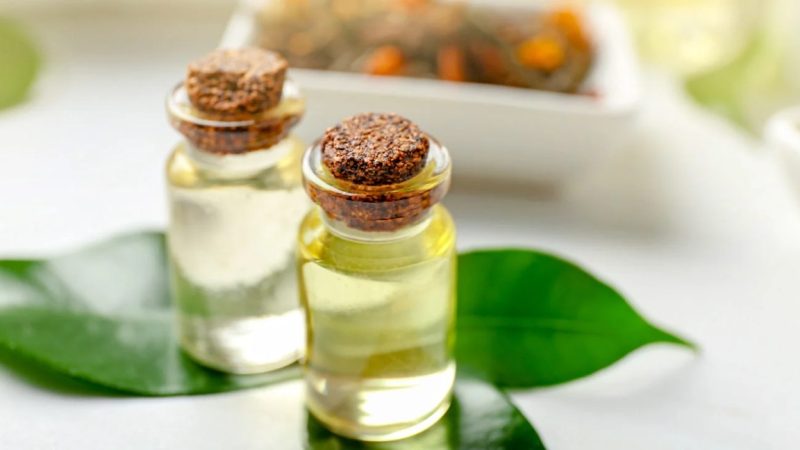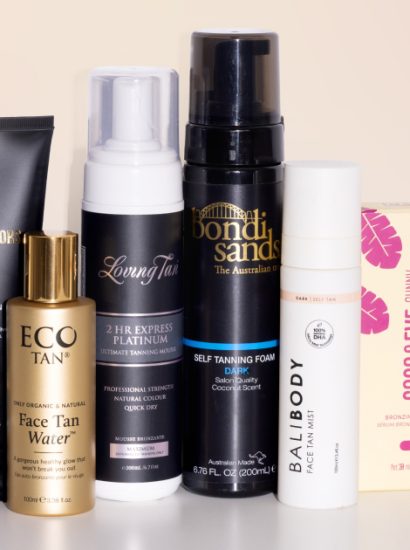When it comes to natural skincare solutions, tea tree oil has earned a reputation as one of the most powerful and versatile remedies. Especially effective for treating acne-prone skin, tea tree oil is an essential oil derived from the leaves of the Melaleuca alternifolia, a plant native to Australia. Its antibacterial, anti-inflammatory, and antifungal properties make it a potent solution for many skin concerns, particularly on the face.
But what does tea tree oil really do for your skin? How can it be used safely and effectively? And can it really help clear your complexion? Let’s explore everything you need to know about tea tree oil for the face.
What is Tea Tree Oil and Why Is It Used in Skincare?
Tea tree oil is a natural essential oil distilled from the leaves of the Australian tea tree. For centuries, indigenous communities have used tea tree leaves to treat wounds, burns, and infections. Today, it’s widely used in skincare products because of its:
- Antibacterial properties: Kills acne-causing bacteria
- Antifungal benefits: Fights fungal skin issues
- Anti-inflammatory action: Reduces swelling and redness
- Antiseptic nature: Helps heal cuts and breakouts
These benefits make tea tree oil especially effective for facial use, particularly for people suffering from acne, oily skin, blackheads, or clogged pores.
Benefits of Using Tea Tree Oil on the Face
Tea tree oil offers a wide range of skin-clearing and healing benefits, making it a popular ingredient in both over-the-counter and DIY skincare treatments.
Fights Acne
The most well-known benefit of tea tree oil is its ability to treat and prevent acne. It penetrates pores to dissolve sebum, unclog follicles, and kill Propionibacterium acnes, the bacteria responsible for breakouts.
Reduces Redness and Inflammation
If your acne is often inflamed or painful, tea tree oil’s anti-inflammatory effects can calm your skin and reduce redness without harsh chemicals.
Controls Oil Production
Tea tree oil helps regulate sebaceous (oil) gland activity, making it ideal for people with oily or combination skin types.
Minimizes Appearance of Scars and Dark Spots
Consistent use may help fade post-acne marks and reduce hyperpigmentation by encouraging skin renewal.
Prevents Blackheads and Whiteheads
Its antibacterial and exfoliating properties help keep pores clean, reducing the formation of comedones.
How to Use Tea Tree Oil for Facial Care
While tea tree oil is powerful, it must be used carefully and correctly to avoid irritation. Here are several ways to use it effectively:
Spot Treatment
Dilute tea tree oil with a carrier oil (like jojoba or coconut oil) in a 1:1 or 1:2 ratio. Apply directly to blemishes using a cotton swab.
Add to Moisturizer
Add 1–2 drops of tea tree oil to your daily moisturizer to combat acne and balance oil production throughout the day.
DIY Tea Tree Toner
Mix a few drops of tea tree oil with water and witch hazel to create a natural toner. Store it in a spray bottle and apply after cleansing.
Tea Tree Face Masks
Incorporate a few drops of tea tree oil into a clay or oatmeal mask for a detoxifying and clarifying facial treatment.
Buy Pre-Formulated Products
If you’re new to essential oils, opt for store-bought facial products containing tea tree oil. Look for cleansers, serums, or gels labeled as safe for facial use.
Tea Tree Oil Safety Tips for the Face
Though tea tree oil is a natural ingredient, it’s still highly concentrated and should be used with caution.
Do’s:
- Dilute properly: Never apply undiluted tea tree oil directly to your face.
- Do a patch test: Apply diluted oil to a small area before using it all over your face.
- Use sparingly: A little goes a long way. Overuse can lead to dryness or irritation.
Don’ts:
- Don’t use if you have eczema, rosacea, or extremely sensitive skin unless approved by a dermatologist.
- Don’t ingest tea tree oil—it is toxic if swallowed.
- Avoid contact with eyes, mouth, and open wounds.
Tea Tree Oil vs. Other Acne Treatments
Many people turn to tea tree oil as a natural alternative to chemical-laden acne treatments like benzoyl peroxide or salicylic acid.
| Treatment | Pros | Cons |
| Tea Tree Oil | Natural, gentle, antibacterial | Can irritate sensitive skin if undiluted |
| Benzoyl Peroxide | Kills bacteria quickly | Can be drying and cause redness |
| Salicylic Acid | Exfoliates and unclogs pores | May not target bacteria as effectively |
Studies have shown that tea tree oil is as effective as 5% benzoyl peroxide, but with fewer side effects such as dryness, peeling, and irritation. It’s an ideal solution for those seeking a holistic skincare approach.
Tea Tree Oil for Different Skin Types
While tea tree oil is widely praised, it’s important to know how it interacts with your unique skin type.
Oily Skin
Perfect match. Tea tree oil helps regulate oil production and clear clogged pores.
Acne-Prone Skin
Ideal for reducing acne bacteria and calming inflammation without harsh side effects.
Sensitive Skin
Proceed with caution. Always dilute and patch-test. Consider lower concentrations or tea tree-infused products.
Dry Skin
Tea tree oil can be drying, so always mix with a hydrating carrier oil and follow with a rich moisturizer.
Combination Skin
Helps balance oily and dry areas. Use targeted application where needed, such as T-zone for oil control.
Best Products with Tea Tree Oil for the Face
Looking to try tea tree oil but unsure where to start? Here are a few top-rated product types:
- Tea Tree Facial Cleanser: Gently removes dirt while treating acne.
- Tea Tree Serum: Potent and targeted treatment for breakouts.
- Tea Tree Gel: Spot treatment for on-the-go acne control.
- Tea Tree Clay Mask: Detoxifies and soothes the skin.
- Tea Tree Oil Roll-On: Easy application for targeted use.
Popular brands that offer trusted tea tree oil products include:
- The Body Shop
- Thursday Plantation
- Desert Essence
- Dr. Jart+ (Cicapair with tea tree infusion)
Conclusion
Tea tree oil is a nature-powered skincare champion that can help you achieve clearer, healthier, and more balanced skin. With antibacterial, anti-inflammatory, and oil-regulating properties, it tackles acne and other skin issues effectively—without the harsh chemicals often found in commercial treatments.
However, like any active ingredient, it must be used properly and mindfully to avoid adverse reactions. Whether you use it as a spot treatment, toner, or through pre-formulated products, incorporating tea tree oil into your skincare routine may be the natural boost your face has been craving.
FAQs
1. Can I apply tea tree oil directly on my face?
No. Tea tree oil should always be diluted with a carrier oil or base product to avoid irritation or allergic reactions.
2. How long does tea tree oil take to clear acne?
Results can be seen in as little as 3–7 days, depending on skin type and consistency of use.
3. Is tea tree oil safe for daily use on the face?
Yes, when properly diluted, tea tree oil can be used once or twice daily, depending on skin tolerance.
4. Can tea tree oil remove dark spots?
Tea tree oil helps reduce inflammation and promote healing, which may gradually fade dark spots caused by acne.
5. Are there any side effects of tea tree oil on the face?
Possible side effects include dryness, redness, or irritation, especially if undiluted or overused. Always patch-test first.
Also read: Nine Yards: Redefining Elegance One Look at a Time





